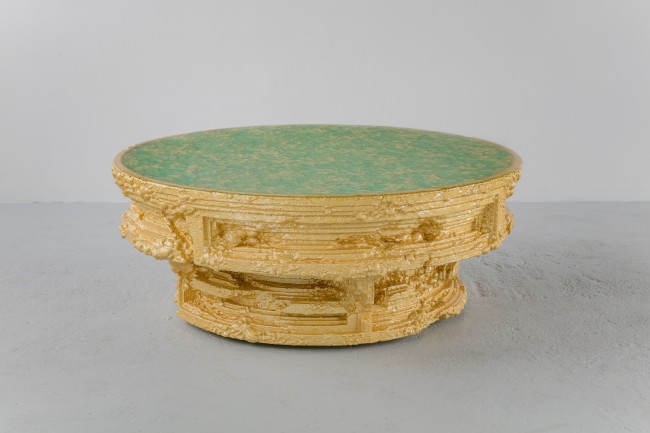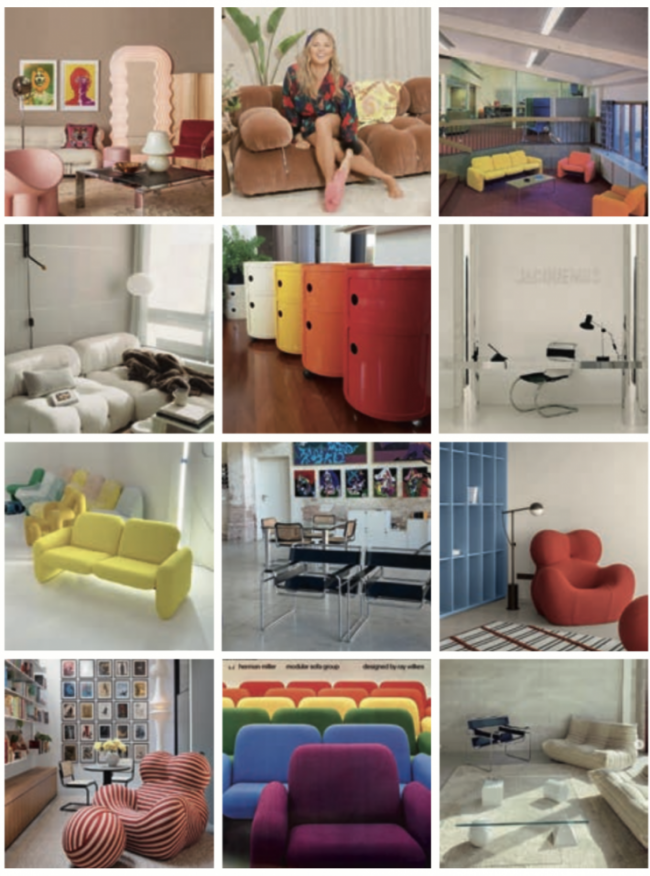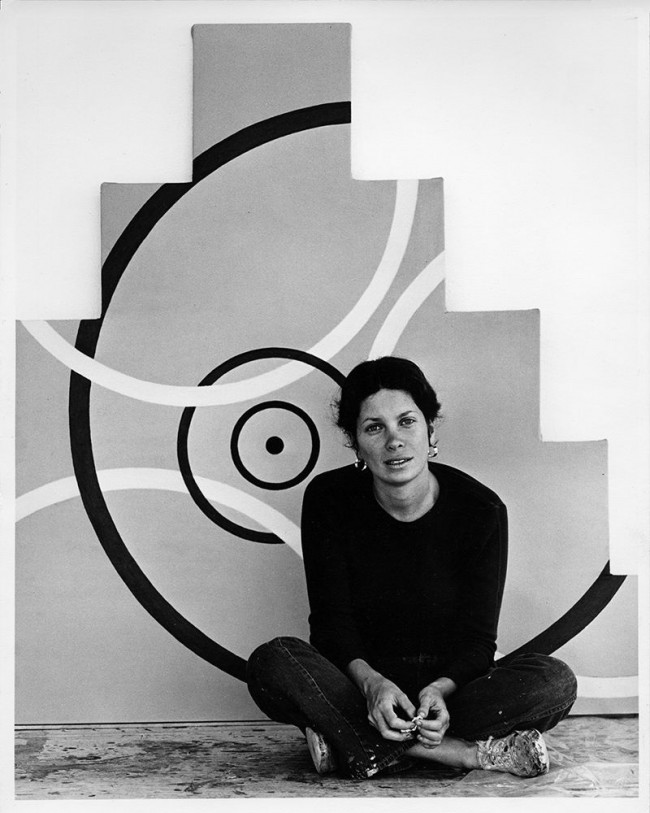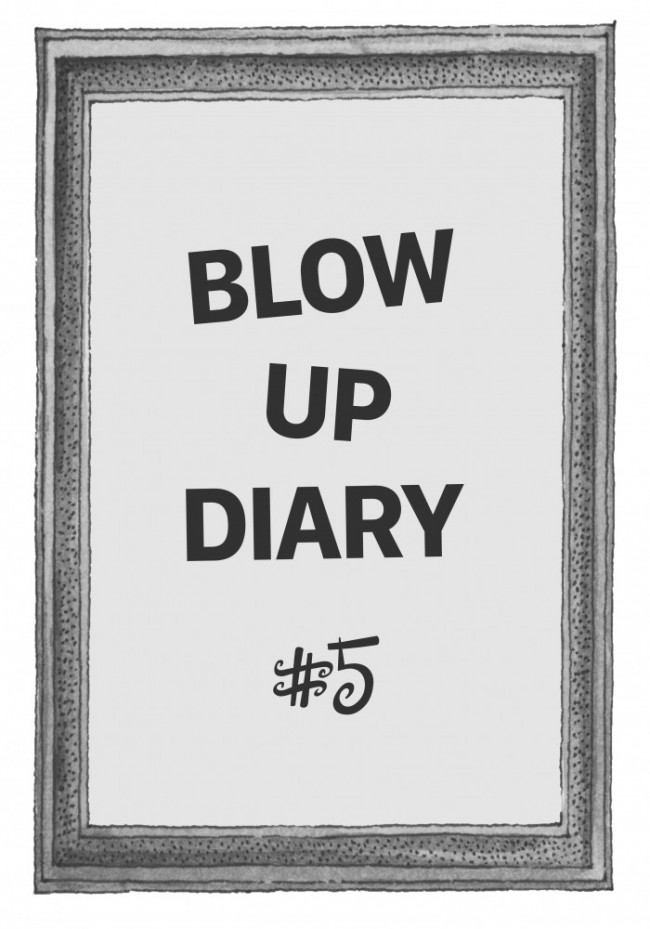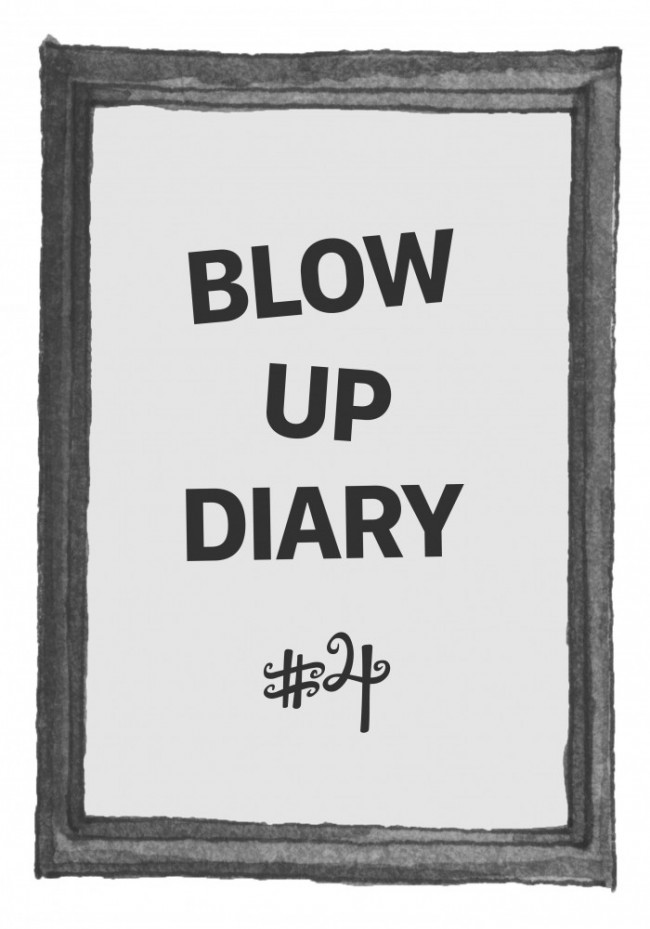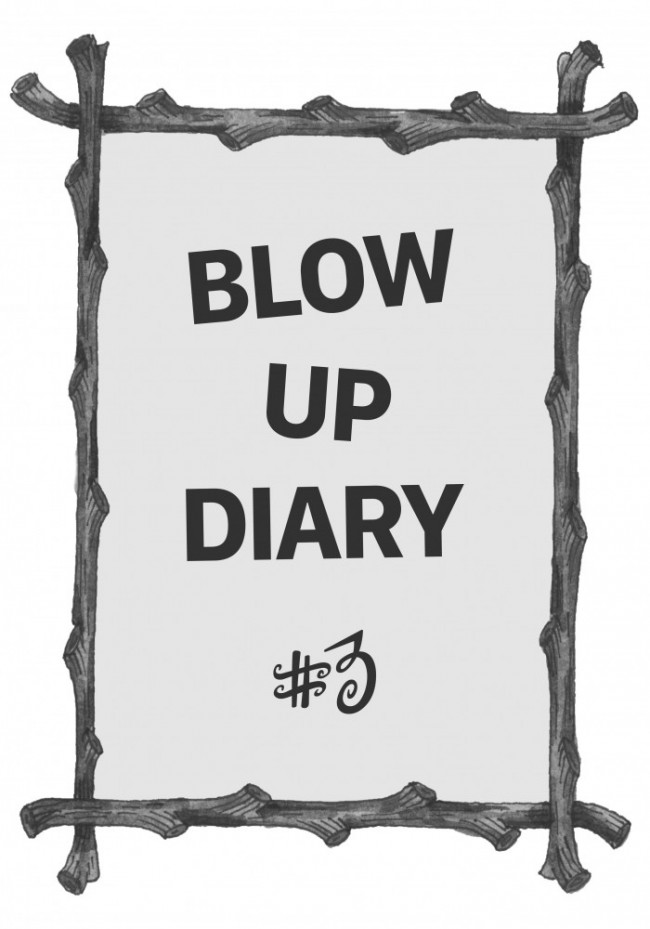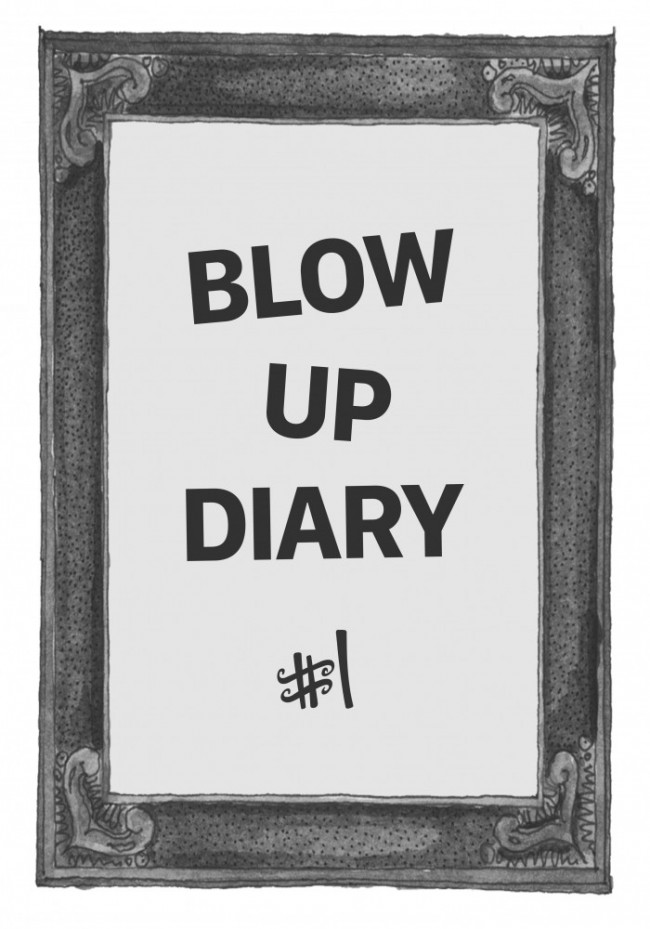INTERVIEW: GAETANO PESCE, THE ICON
Gaetano Pesce at Pont d’Alma in Paris in 1998.
Gaetano Pesce needs little introduction. And yet, the 82-year-old is still full of surprises, especially for young designers. Born in northern Italy and raised by a single mother, the architect, designer, and artist studied architecture in Venice before being pulled into the vortex of 1960s experimentation in Radical Design. While many of his contemporaries either lost steam or settled on catering to the tastes of the bourgeoisie, Pesce never stopped experimenting with new materials, new shapes, new prophecies. The proudly incoherent oeuvre he’s created in the half century since spans media, furniture, art, and entire buildings — in Bahia, Osaka, Puglia — that have inspired generations of young creators since (myself included). Pesce thinks in color, shape, texture, materials, and the politics of storytelling, but everything he does is concerned with time: how does one embody it as an orchestrator of history? Our interview takes place in his large Brooklyn Navy Yard workshop in New York, the city’s he’s called home since 1980. It is from here that his designs, in signature materials like resin, fabric, and polyurethane, make their way into the world and into contemporary consciousness. Pesce never stops working, not even during the pandemic — his recent show at Salon 94, No More Silent Objects, is one of three he’s worked on this year. When I arrive at the studio, I immediately fall into a production line that requires me to insert myself into the scene, find my purpose among the workers, and settle into the task at hand: interviewing an icon.
Emmanuel Olunkwa: Who is Gaetano Pesce?
Gaetano Pesce: Gaetano Pesce is a very curious person. I went to an architecture school that was meant to be the best in Italy at the time, but I wasn’t satisfied with what I learned because I didn’t find it interesting. I was curious about materials, which I’ve said several times before, I’m sure.
Yes, you were being taught stone, wood, and brick but wanted more. I’m familiar with the story. (Laughs.)
Yes, I went to chemical companies and asked if I could see innovative materials. I saw a lot of things that weren’t being discussed in my classes at school.
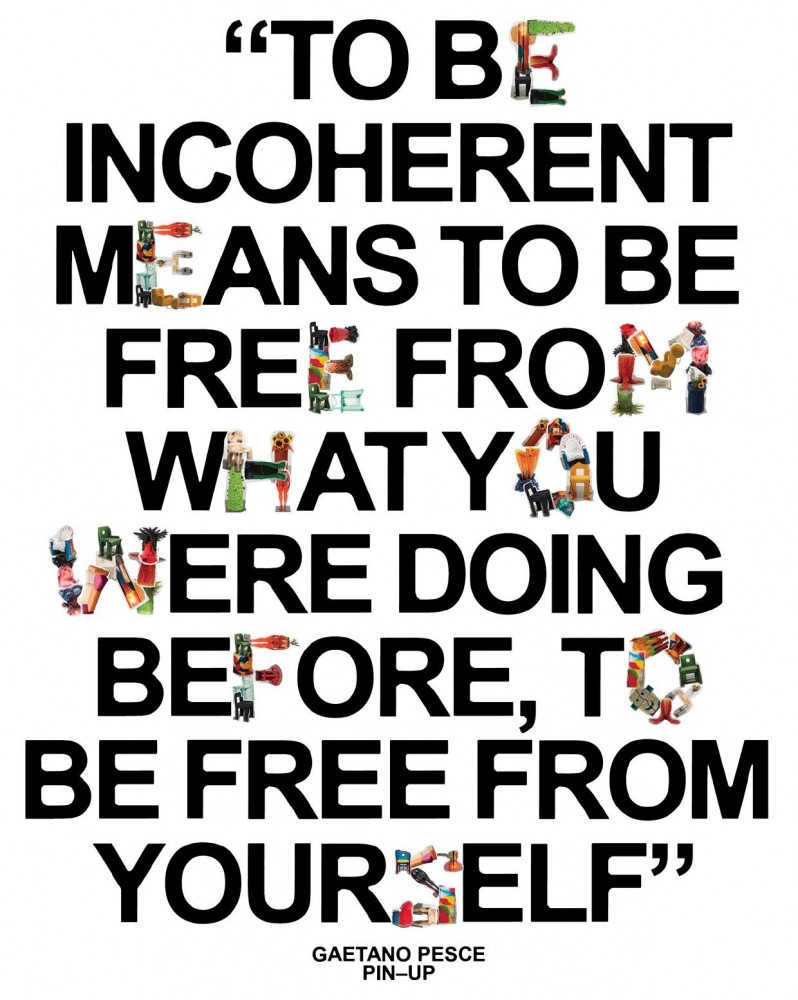
Special Gaetano Pesce lettering by Office Ben Ganz for PIN–UP.
I’m more interested in learning about you outside the narrative of the construction of your artistic persona. Who are you when you’re not making things?
It’s difficult to say because I’m always working. Work is a pleasure for me, an activity that constantly surprises. It’s the kind of work where you repeat — it’s not about repetition at all, which is very boring, but making things all the time is a kind of repetition in itself. The unexpected aspects of making objects give me energy to continue to explore. It’s never enough. I like to go to the beach, read, and other things, but I like to be here in the studio mostly. The other day we were working on a piece and, as it was coming together, I realized it was wrong, and we decided to throw it out. My work is about research, materials, and how they come together. I’m interested in capturing experiences and showing what I’ve found. Not enough people experiment in their work, but, as I’ve said before, there’s only one architect in the world who’s experimenting. I don’t know what he’s doing now but when I knew him, he was — I’m talking about Frank Gehry.
What do you like about his work?
He was interesting to me because he didn’t come from architecture, but from sculpture. He had another vision, and his education was more directed towards art. What concerns other architects I know personally is that they don’t maintain a level of ethical research. What we see in contemporary architecture is the consequence of the International Style, which is horrible today but wasn’t at the time it was developed. It’s repressive and nostalgic. Today it can be understood as more of a communist movement where everything built looks the same, which might have been good 100 years ago but isn’t now. We need originality, diversity, and specificity.
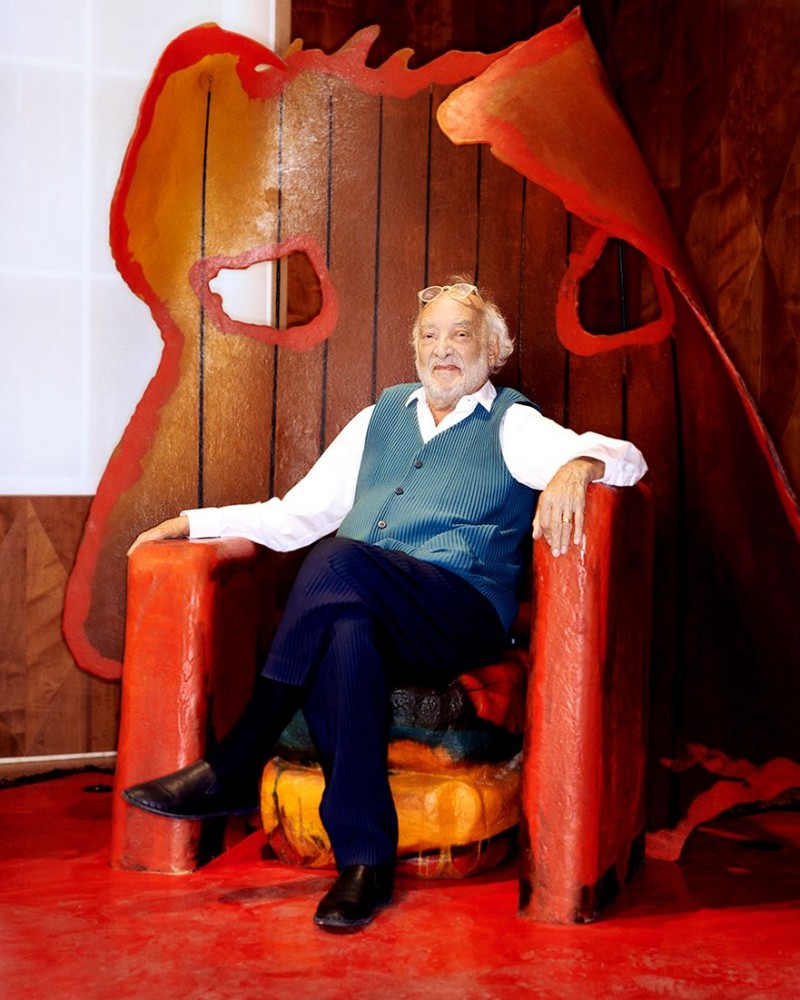
Gaetano Pesce photographed by Caroline Tompkins for PIN–UP.
What does architecture mean to you?
You cannot bring a style of architecture to a place without considering the environment. You must consider geography, tradition, and climate. A place is like a person. You can’t assume it functions like anyone else. You must spend time and get to know it, because people are unique. Places and people depend and survive on healthy relationships. If you say to someone, “You’re just like everyone else,” you’re going to offend that person. It’s the same with architecture and environments. I don’t understand why we continue to offend the land and its people everywhere we go. Most architects think that they’re making architecture when they’re really making decoration, which is superficial. In Italian we have a word...
Oh I know, edilizia? The art of building?
Yes, edilizia. We need edilizia! We need offices, apartment buildings, factories, and those kinds of things. Architecture shouldn’t concern itself with need unless it’s innovation.
What does innovation mean to you?
It means the invention of a language and technique. Great architecture is done with three factors: new language, new use of material, and new technique. If I think of my house in Bahia, it was a new way to build, just as the houses in Puglia were completed with a new spray-foam technique.

View of Marc-André Hubin’s apartment in Paris, Designed by Gaetano Pesce in 1986.
Who are some of your influences?
If I look back at history, the contradictions of Michelangelo and the curiosity of Leonardo da Vinci were important to me. It’s about reaching a kind of curiosity that intrigues you, a place where you’re only able to discover.
Any contemporary people?
Very few. Marcel Duchamp was a great mind because he was constantly questioning. Andy Warhol was rare because of his love of being incoherent in a certain way, which is what makes real art — it’s about invention. It’s not about being coherent with what you were doing yesterday. To be incoherent means to be free from what you were doing before, to be free from yourself. Meaning you’re free to experiment.
Who do you make work for?
I don’t know. Maybe you know better than me? I don’t follow magazines or much culture.
Does the making of the object happen while you are working with the material? What is your process and how has it changed?
I don’t make things so they appear nice or elegant. I make objects to communicate different stories to people. I try to make new forms and expose people to different materials. My work is about communicating to those who are unique, to encourage them to stay different and true to themselves and their character. Our democracy should protect the people who challenge the idea of community. People do not enter this world equal, so to focus on making a society that is equal makes no sense, because we can never be united when met with such indifference. The future should focus on making new values that are different and help diversity and help people who are suffering and say, “No, don’t suffer. You are the best because you are different.” It’s the same with architecture — you have to build things as an act of love.
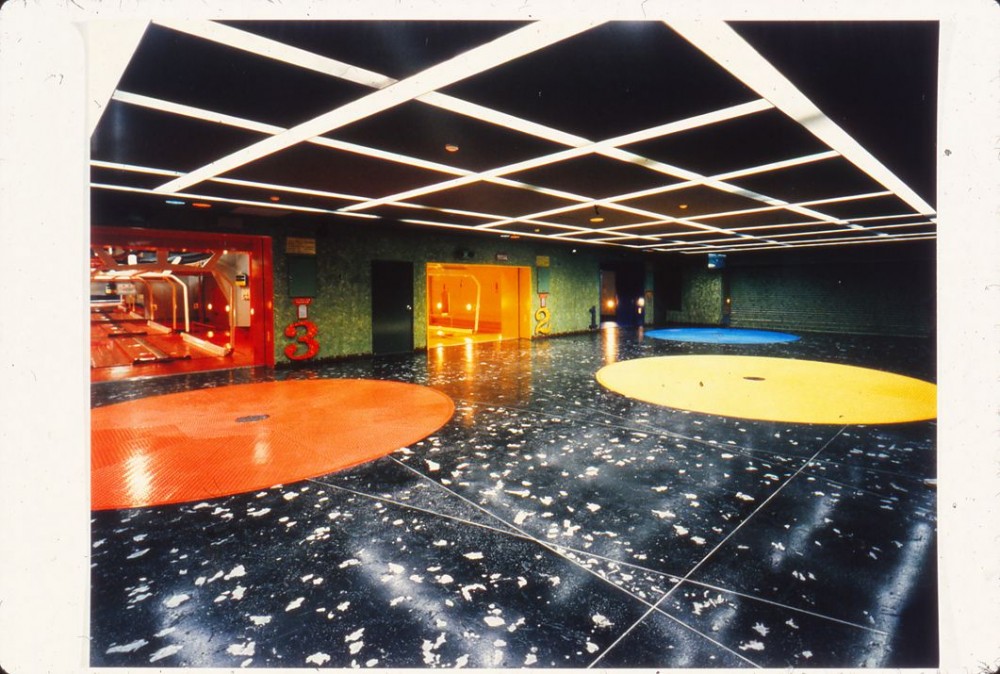
Interior view of Organic Building in Osaka, Japan by Gaetano Pesce completed in 1993.
Architecture should be emotional.
Materials for instance, are very important. Every day, somewhere around the world, there is someone discovering something new. It’s strange to say that architects aren’t interested in that but only focus on making buildings with the same materials. To think that concrete was discovered two centuries ago, the intervention of the metal structure, stone, and brick, all these materials and techniques are very old. Why don’t we focus on the use of new materials? The house I made with foam, for example — it would be interesting if someone took that technique and made it better, and then have someone else adopt it until we had a more efficient system.
I think people are afraid of change and difference.
Yes, and those are the least interesting people.
Who were you thinking about when you first started making things? What informed your practice?
I like to observe and think about where our times are going. Time in general, from history until today. Time is a vehicle of values, and our values change all the time. People who pay attention to what’s happening in the world and its value stay alive in the brain. People who don’t understand what’s happening age rapidly and decline.
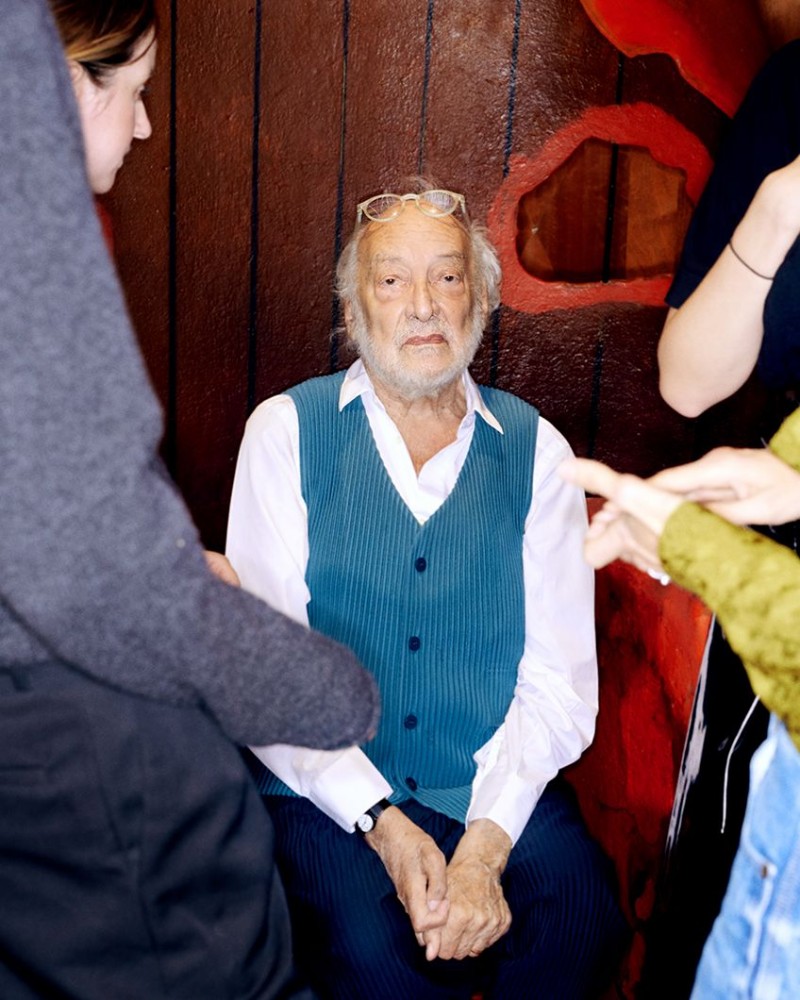
Gaetano Pesce photographed by Caroline Tompkins for PIN–UP.
Where do you live?
On the Upper East Side, near the water. I’ve always lived near water. In Brazil I lived near the ocean.
I was going to ask you about your last name, which means “fish” in Italian. As you know, Gehry, whom you admire, is obsessed with fish.
(Laughs.) I told him once that his works pay homage to me. The shape of fish is beautiful...
Yes. Scales, iridescence color, texture...
...the movement. Anyway, to go back to what you were talking about. Our time is like water — it comes up and goes down, just like values disappear and reappear, everything needs to flow. Our time should be fluid. If you pay attention to how people are dressing, how they talk and move, what they like, then you understand our time.
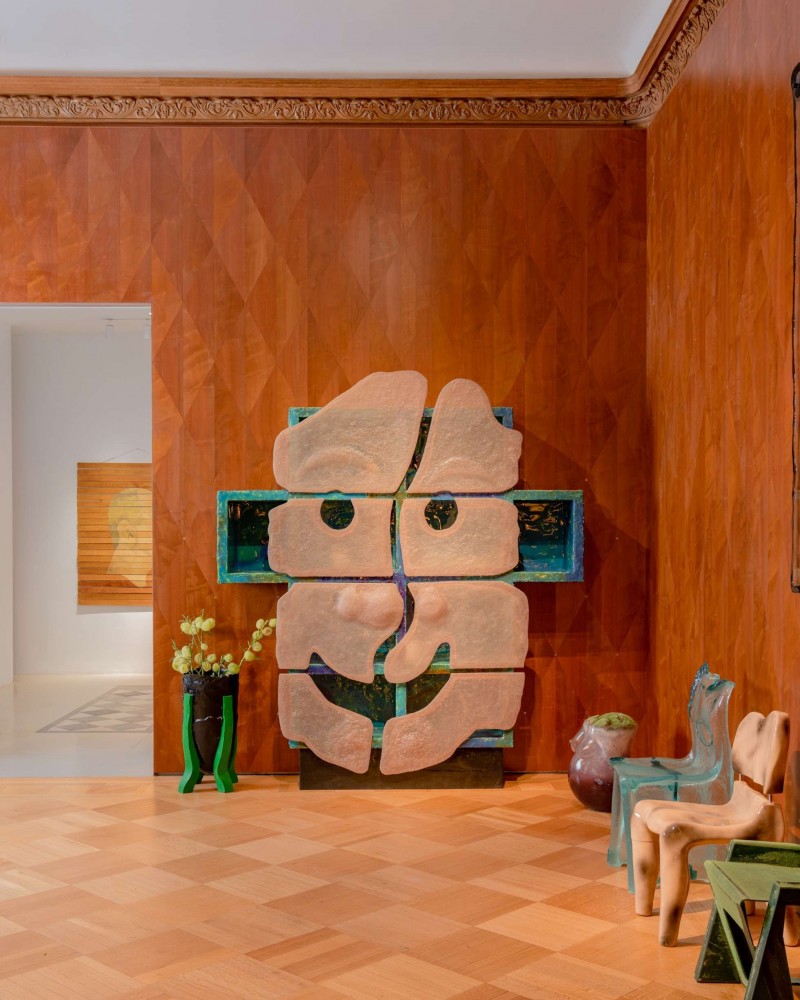
Gaetano Pesce's No More Silent Objects at Salon 94 photographed by Sean Davidson. Courtesy Salon 94 Design.
How do those observations translate to your work? Do you stand among the objects you created and try to differentiate one thing from another?
No, that’s not how I work. When I was 18 years old, I did my first show and wrote about incoherence. It’s a theme that has stayed with me throughout my life. I like to make things that people can’t tell were made by me. If I look at the tradition of object-making, artists and architects were doing and making the same style of things, there was no evolution in their work.
Does your experimentality exist in the actual objects or process? Or do you diversify in genre and medium? Do you write or read, or do you watch a lot of movies?
Sure, I read and am interested in experiencing cinema, but the most important thing for me is to make a relation between the time I’m living in and my work. So my work changes with the time. One night, I was at home, and I asked myself, “Does all architecture have to be abstract?” And I thought, “No, abstraction is a characteristic of another time, it’s a certain kind of geometry from the past, preserved.”
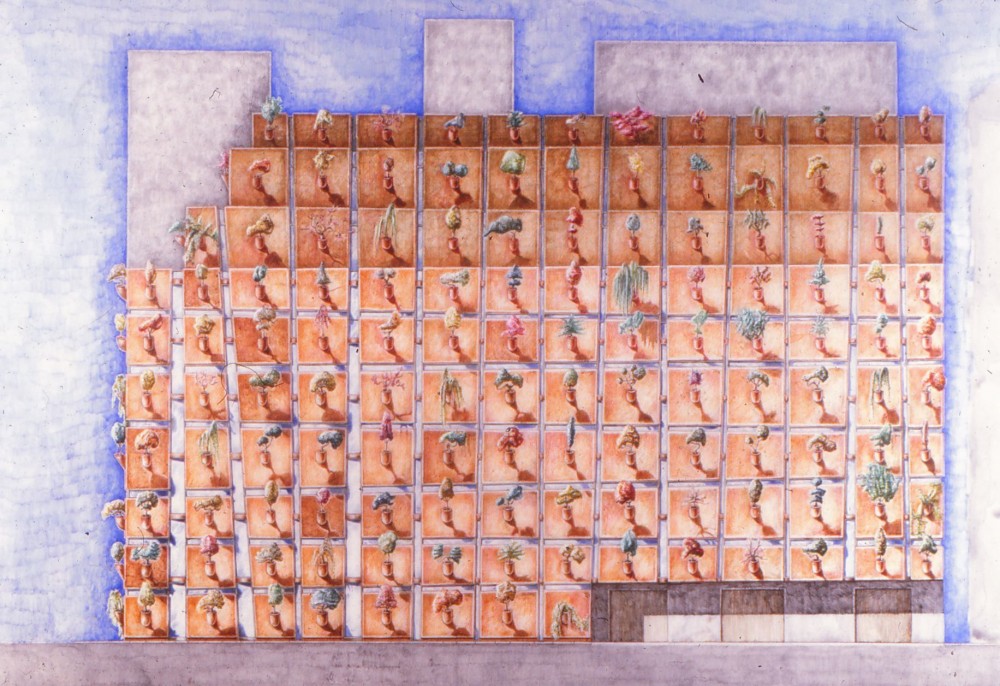
Sketch of Organic Building in Osaka, Japan by Gaetano Pesce completed in 1993.
Do you consider yourself an abstract thinker?
No, I’m a very radical thinker. I’ll give you an example (points to the building directly across from the studio): that building is an abstraction because its form does not tell you its function. You don’t know if it’s an apartment building, a factory, or a studio. I like to see buildings with forms that can communicate their function. So, for instance if that building there were an apple? Then it would be...
A fruit factory?
Yes.
What are your thoughts on aesthetic and decorative art?
I don’t care about either. I care about vitality and feeling. I like Manhattan because its people are creative, though the architecture is not. I only like one building, which is the Guggenheim Museum.
What does it communicate for you? What do you think is going on inside?
It’s a place that signifies that it protects the past. It’s preserving something.
How did you end up studying architecture?
My mom, who was a classically trained pianist, told me one day when I was in high school that going to architecture school would be the best thing for me. She told me, and I agree, that architecture is the highest form of art, better than painting, sculpture, and music. Architecture is a complete art — it’s sound, movement, cinema, painting, and music. It’s both three and two dimensional.
Were you doing anything at the time that made her suggest you pursue it?
No, I was doing something superficial. I was mainly working on kinetic art. We were very close, and I was interested in learning about music composition and why composers made certain arrangements in music. When I finally started architecture school, I took a class on interiors and met this woman who was more intelligent than me who said, “Look, in the field of objects there is a lot to do.” And I was like, “What do you mean? What is there to do?” and she said, “Object-making is the art of the future.”
What does that mean?
Design.
When was this?
1961.
And what did you say?
I started to open my eyes and understand better. If an object can express a concept, but also have a function and a political position, that’s what makes it art, and art is nothing more beautiful than that.
Right, art is nothing more than the communication of a political message.
If you take Goya’s paintings for instance, they’re very political and that’s what makes them art. But the guy who put the fish inside liquid in a museum...
(Laughs.) Damien Hirst?
Yes. You go to a museum of natural history for that. That dead fish doesn’t say anything. So, were you to talk about the influence between Hirst and Warhol, it’s the difference between a mosquito and an elephant.
(Laughs.) What does that mean?
The guy who made the fish is a mosquito.
Which makes Warhol?
He’s more complicated and capable of creativity. To take a fish and put it in liquid requires no thought. The mosquito is nothing — it’s an idea — the elephant is a mass, there’s a presence that you witness. I don’t go and see much art these days, but what does make its way to me seems to be a lot of noise and decoration.
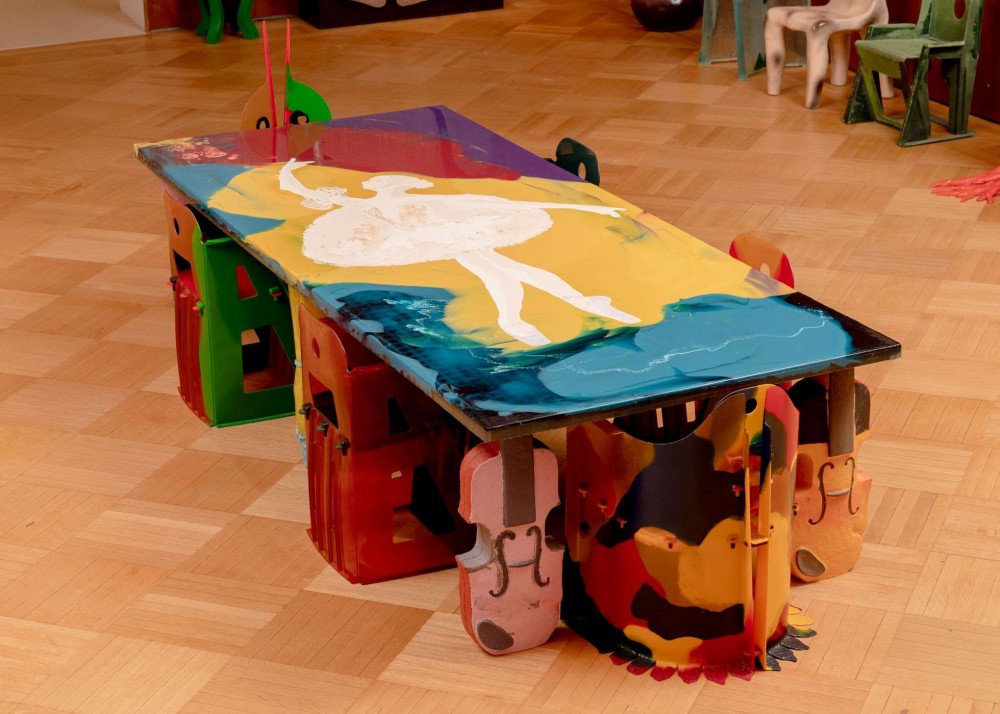
Gaetano Pesce's No More Silent Objects at Salon 94 photographed by Sean Davidson. Courtesy Salon 94 Design.
The theme for my first issue with PIN–UP is Radical Optimism.
Radical Optimism is beautiful.
What do you think it means to be radical?
To me radical means innovative people. It’s very rare in society today to hear people talking about the future. The future doesn’t exist for so many people, but for me it’s super present.
I completely agree. I’m only concerned with the future and moving through the world with intention and making room for things to root and take life.
Exactly, I work for the future. If you work for the future, you’re able to transform the present, otherwise you’re only ever living passively.
The past for a lot of people is the future. It’s the thing to relish, obsesses over, and use as a moral compass or foundation to create meaning.
The creative people of the world are responsible for providing people with optimism. We have to trust that there is going to be a future, we have to believe that the conditions of the world are going to improve. To do that we must try to change the present, every day.
Do you think of criticality as a form of optimism?
Yes, because if you criticize a dictator, a horrible society, or an oppressive force, you’re an optimist. I don’t make work so it appears elegant or nice, it’s to communicate something that people don’t see. It’s to show them and say, “Look, our time is beautiful.” Progress is very important, and the future must be present. We create those conditions with the work we do now.
Interview by Emmanuel Olunkwa
Recent portraits by Caroline Tompkins
All images courtesy of Gaetano Pesce Studio.

